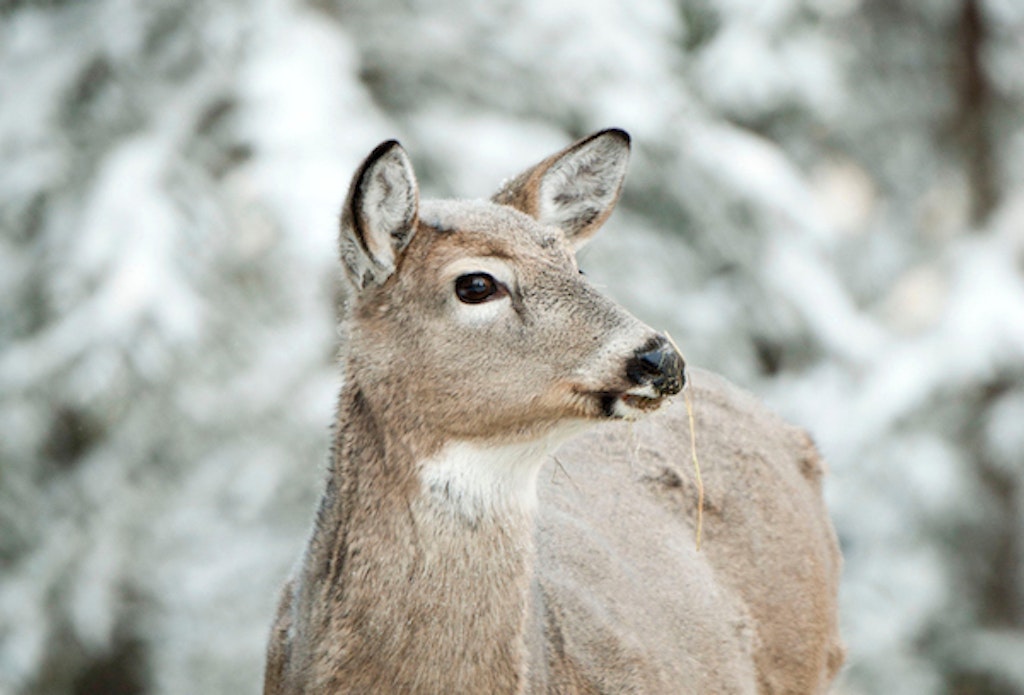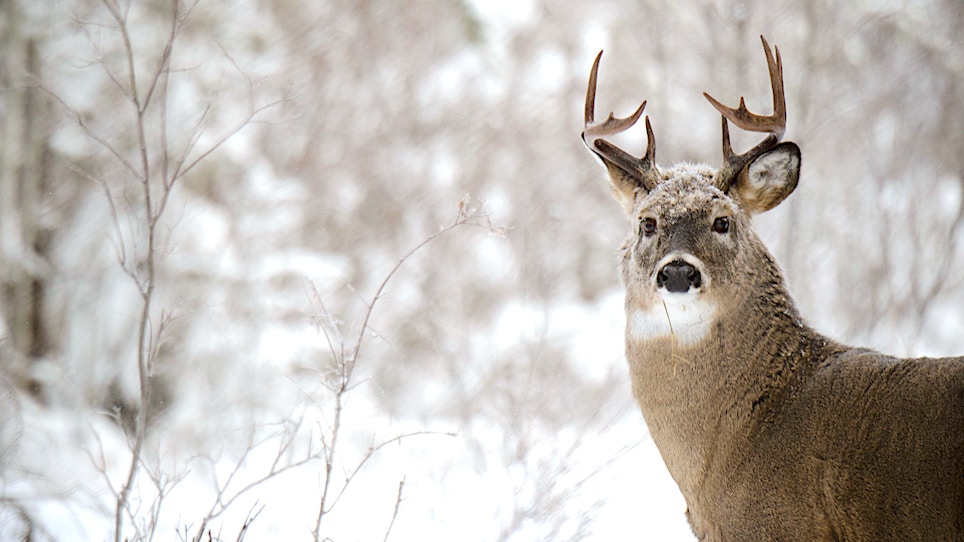As you sit in the treestand freezing your tail off, you might watch the deer move through your spot and wonder why they’re so comfortable in the harsh winter weather. Yes, they’re at home. And they’re made for this.
But why are they made for this?
Here are common questions and some not-so-common questions about a deer’s ability to survive cold weather.
Q.
How do fat stores affect a deer’s resistance to cold weather?
A.
Deer start to prepare for winter months before the temperatures begin to drop. They do this by storing fat around internal organs and under their skin which insulates and provides energy reserves for the lean months ahead. — Pennsylvania Game Commission

Q.
What makes a deer’s winter coat so insulating?
A.
A deer’s winter coat keeps these animals warm even when it’s -30 degrees Fahrenheit. Consider that for a minute. Hunting apparel and outdoor-gear company Kuiu's warmest sleeping bag protects backcountry hunters in cold temps as low as zero degrees, making a deer's winter coat far more protective than one of today's most technologically advanced sleeping bags.
Each hair on a deer’s winter coat is hollow, so air is trapped inside, which helps the animals retain heat. Utilizing air pockets for warmth is mimicked in cold-weather apparel, quilts and window panes.
There’s also natural oils, which work like the wax of a wax-cotton field jacket. A deer’s Sebaceous glands in the skin produce this water-repellent oil to coat hair filaments.
Q.
In colder climates where water is frozen for months at a time, how do deer drink and satisfy their basic daily requirement for water?
A.
Deer can satisfy their water needs one of three ways: by drinking free water, through preformed water — which is available in the foods they eat — and through the digestion process, where metabolic water is released from food. It’s also helpful that deer need water most in the spring and summer. This works out well since fresh water is often frozen in colder, winter climates, combined with a selection of winter foods that are drier and less succulent.
Deer in northern ranges often satisfy their thirst by browsing on the green needles of coniferous trees like hemlock and white cedar.
Bonus fact: According to the Quality Deer Management Association, northern deer have the unique ability to recycle their urine and dry their feces internally to conserve water during winter.

Q.
What if a deer falls into freezing water, could it survive or would hypothermia overcome the animal?
A.
We know deer, like humans, will eventually succumb to hypothermia. But deer can handle far cooler water temperatures before this is a concern. Scott Rando, an outdoor writer from Narrowsburg, New York, has watched a deer cross a body of water that was a few degrees above freezing. The river was mostly rapids and eddies. But the deer crossed without issue.
“Deer are better swimmers than we give them credit for and can handle cold water well,” he wrote in an issue of The River Reporter.”In the two minutes or so that this deer took to cross the river, an unprotected human would be in great peril of succumbing to hypothermia. When ice doesn’t cover the river or another body of water, deer will not hesitate to swim in order to get to the other bank.”
Longtime outdoor writer, avid hunter and Waupaca, Wisconsin native Patrick Durkin put it this way: “Eventually hypothermia would get them if they fell into freezing water, like a hole in the ice, but man, I’ve seen them swim creeks and rivers that had to be in the 30s. Typically it’s not far, so they just get out, shake off and keep going … kind of like a Labrador.”
Q.
Do deer seek out warmer places when the weather is frigid?
A.
Yes. This is often referred to as “yarding up.” In freezing weather, you’ll find deer among evergreens like pines, hemlocks, spruces and cedars. The canopy of trees can reduce wind speeds and snow pack, along with thermal cover so temps are higher at night in these areas. Once in these environments, deer may move very little and can stay put for one to three months.
Q.
During periods of freezing temperatures and inclement weather, does staying active help deer stay warm?
A.
Actually, deer become less active. According to Dr. Dave Samuel, deer stay warmer when they’re at rest.
"When a deer is at rest, its metabolic rate varies depending on the season,” Samuel says. “You might think in winter this rate would increase to allow the deer to stay warm, but the opposite is true. The metabolic rate decreases in winter. Recent research from Europe on red deer shows that red deer reduce their heart rate even more if they aren’t getting enough food.
"There is more to this, with reportedly a direct correlation between heart rate and rumen temperature. When things get really tough, deer lower their heart rate and body temperature, which reduces energy expenditure. (The resting heart rate of a deer is 40-50 beats per minute. Ours is slightly higher, although great runners have resting heart rates below 50 beats per minute.)"






